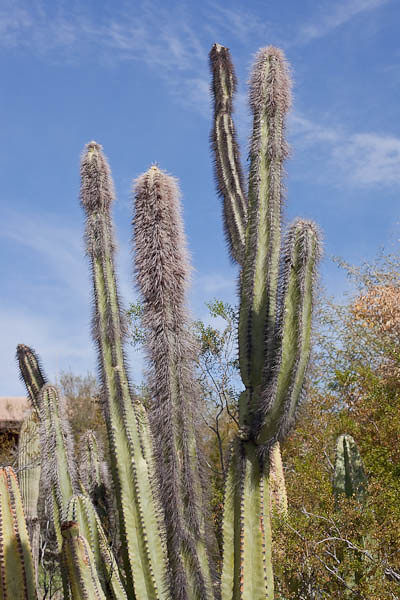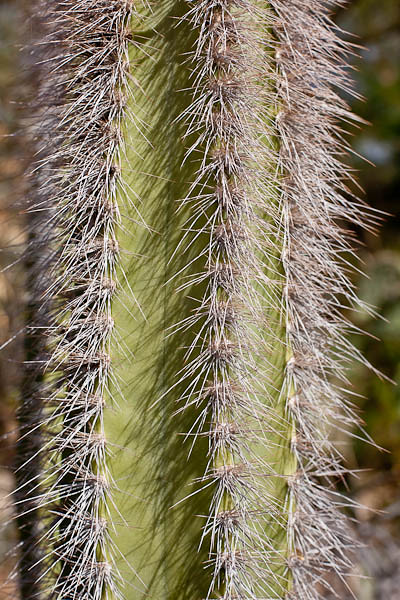This is the Senita cactus, one of the three largest cactus species found in a few areas of the United States. The Organ Pipe Cactus and the Saguaro Cactus (third photo in linked post) are the other two specimens that are found in the southern Sonora Desert in the US. They are more abundant in Mexico.
Senita usually grow about 10 to 12 feet tall and it looks very similar to the Organ Pipe Cactus, except for the long and bristly gray spines which densely cover the top third or so of each mature cactus arm.
The word senita is derived from a Spanish root meaning “old” and could roughly be translated “little old woman,” which I suppose seems appropriately named.
One of the things I found most interesting when I was doing a little research on the senita — the senita is very long-lived. According to A Natural History of the Sonoran Desert, published by the Arizona – Sonora Desert Museum, “when sites in Baja California photographed in 1905 were revisited in the 1990s, nearly every senita was still present.” The book didn’t say, but I’d love to know how much these cacti grew in that nearly 100 year period.
I am more than careful when it comes to touching the plants in the desert. This is extremely hard for me to stop, because I learn best through the techniques of visual and tactile (or kinesthetic) learning.
I want to get as close as I can to see the tiniest visual detail AND I want to touch all the parts of the cactus, too. Not so wise, but I did touch the gray spines of the senita — very carefully, I assure you — and they were very bristly and sharp.
Not unlike Sherpa’s two-day growth of beard when he is roughing it and forgoing shaving. (Ouch!)
—————
Bo Mackison is a photographer and owner of Seeded Earth Studio LLC. Bringing you photographs and natural history notes from the Sonoran Desert, at least for a few more days.









